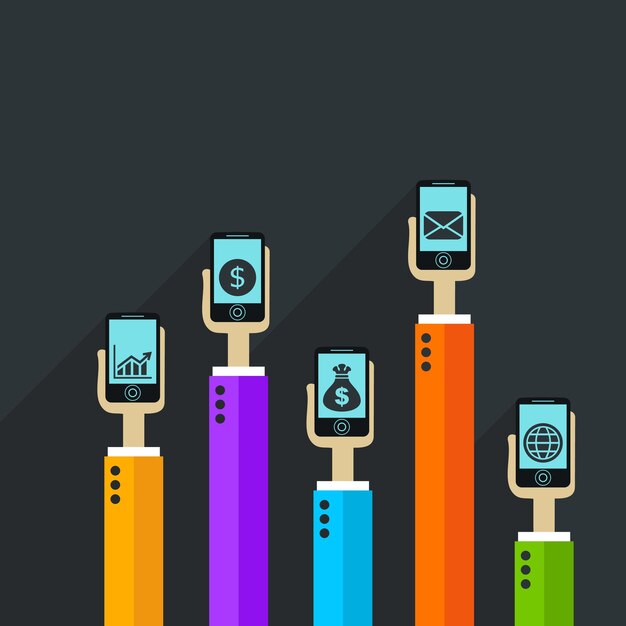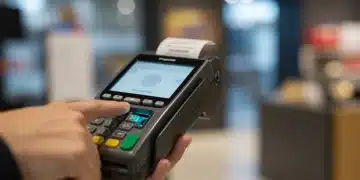US Fintech Payment Innovations: Mobile Wallets & Contactless Payments in 2025

US Fintech payment innovations are rapidly transforming how consumers transact, with mobile wallets and contactless payments leading the way, bolstered by technological advancements and shifting consumer preferences, paving the way for new trends.
The American fintech landscape is undergoing a seismic shift, especially in how we handle payments. The rise of US Fintech payment innovations is reshaping the financial habits of millions, with mobile wallets and contactless payments at the forefront of this revolution.
The Rise of Mobile Wallets in the US
Mobile wallets have steadily gained traction in the US, offering a seamless and convenient way to make payments. These digital wallets, housed on smartphones or other mobile devices, are becoming increasingly popular as consumers seek faster, more secure transaction methods.
With major players like Apple Pay, Google Pay, and Samsung Pay dominating the market, mobile wallets are evolving beyond simple payment tools.
Key Drivers of Mobile Wallet Adoption
- Convenience: Mobile wallets eliminate the need to carry physical cards, streamlining the payment process.
- Security: Tokenization and biometric authentication provide enhanced security compared to traditional payment methods.
- Rewards Programs: Many mobile wallets integrate with loyalty programs, offering users additional incentives.
Mobile wallets are not just about convenience; they also cater to a growing demand for contactless and secure transactions. As technology advances, these digital wallets are poised to become even more integral to the US payment ecosystem.

Contactless Payments: A Hygienic and Efficient Alternative
Contactless payments, facilitated by technologies like near-field communication (NFC), have experienced significant growth, particularly since the pandemic. They offer a hygienic and efficient alternative to traditional card swipes, reducing contact and minimizing transaction times.
Major credit card companies and retailers have embraced contactless payments, enhancing the user experience and promoting contactless transactions. This shift towards contactless solutions reflects a broader trend towards digital transformation in the US financial sector.
Benefits of Contactless Payments
- Hygiene: Reduced physical contact helps prevent the spread of germs and viruses.
- Speed: Contactless transactions are typically faster than traditional card swipes or chip inserts.
- Efficiency: Streamlined payment processes enhance the overall customer experience.
Fintech Innovations Driving Mobile Wallet and Contactless Growth
Numerous fintech innovations are accelerating the adoption and functionality of mobile wallets and contactless payments. These advancements are transforming the payment landscape, introducing new features and capabilities that enhance user experience.
From biometric authentication to blockchain integration, fintech companies are pushing the boundaries of what’s possible in the realm of digital payments. Such innovations are key to sustaining the growth and evolution of mobile wallets and contactless methods in the US.
Emerging Fintech Payment Solutions
- Biometric Authentication: Fingerprint scanning and facial recognition add an extra layer of security.
- Blockchain Integration: Cryptocurrencies and blockchain technologies offer new payment options and enhanced security.
- AI-Powered Fraud Detection: Artificial intelligence helps identify and prevent fraudulent transactions in real-time.

Consumer Preferences and the Future of Payments
Consumer preferences are playing a crucial role in shaping the future of mobile wallets and contactless payments. As more Americans embrace digital technologies, their expectations for seamless and secure payment experiences are rising.
The demand for convenience and personalization is driving fintech companies to innovate and refine their offerings, creating solutions that cater to individual needs and preferences. Understanding and adapting to these evolving consumer behaviors is essential for staying competitive in the payments market.
Security Concerns and Mitigation Strategies
Security remains a top concern for both consumers and businesses when it comes to mobile wallets and contactless payments. Addressing security risks is essential to maintaining trust and fostering wider adoption of these digital payment methods.
Fintech companies are implementing robust security measures, including encryption, tokenization, and fraud detection systems, to protect sensitive financial information. By continuously improving security protocols, the industry can ensure a safe and reliable payment environment.
Key Security Measures
- Encryption: Protecting data during transmission and storage.
- Tokenization: Replacing sensitive card data with unique tokens.
- Fraud Detection Systems: Monitoring transactions in real-time for suspicious activity.
Regulatory Landscape and Compliance
The regulatory landscape surrounding fintech payments is constantly evolving, with new laws and regulations aimed at protecting consumers and ensuring fair competition. Compliance with these regulations is crucial for fintech companies operating in the US market.
Staying informed about the latest regulatory changes and adhering to industry standards is essential for building trust and maintaining a positive reputation. Compliance not only safeguards consumers but also promotes innovation and sustainable growth within the fintech sector.
| Key Aspect | Brief Description |
|---|---|
| 📱 Mobile Wallets | Digital wallets on smartphones for convenient transactions. |
| 💳 Contactless Payments | Use NFC for quick, hygienic transactions. |
| 🔒 Security | Includes encryption, tokenization, and fraud detection. |
| ⚖️ Regulations | Following laws for consumer protection and fair trade. |
Frequently Asked Questions
▼
Mobile wallets are digital wallets stored on smartphones or other devices. They allow users to make payments without physical cards, offering enhanced convenience and security.
▼
Contactless payments use Near Field Communication (NFC) technology, allowing users to tap their card or device near a payment terminal. This results in faster and more hygienic transactions.
▼
Yes, mobile wallets often incorporate security measures like tokenization and biometric authentication, offering a more secure payment method compared to traditional cards.
▼
Contactless payments are faster, more hygienic, and more efficient than traditional methods. They reduce physical contact and streamline the payment process for both consumers and businesses.
▼
Fintech companies are introducing innovations like biometric authentication, blockchain integration, and AI-powered fraud detection, enhancing the functionality and security of digital payments.
Conclusion
The landscape of US Fintech payment innovations is poised for continued evolution, with mobile wallets and contactless payments at the forefront. As technology advances and consumer preferences shift, these digital payment methods are set to transform the financial habits of Americans. By addressing security concerns, complying with regulations, and embracing innovation, the fintech industry can ensure a seamless, secure, and efficient payment experience for all.





